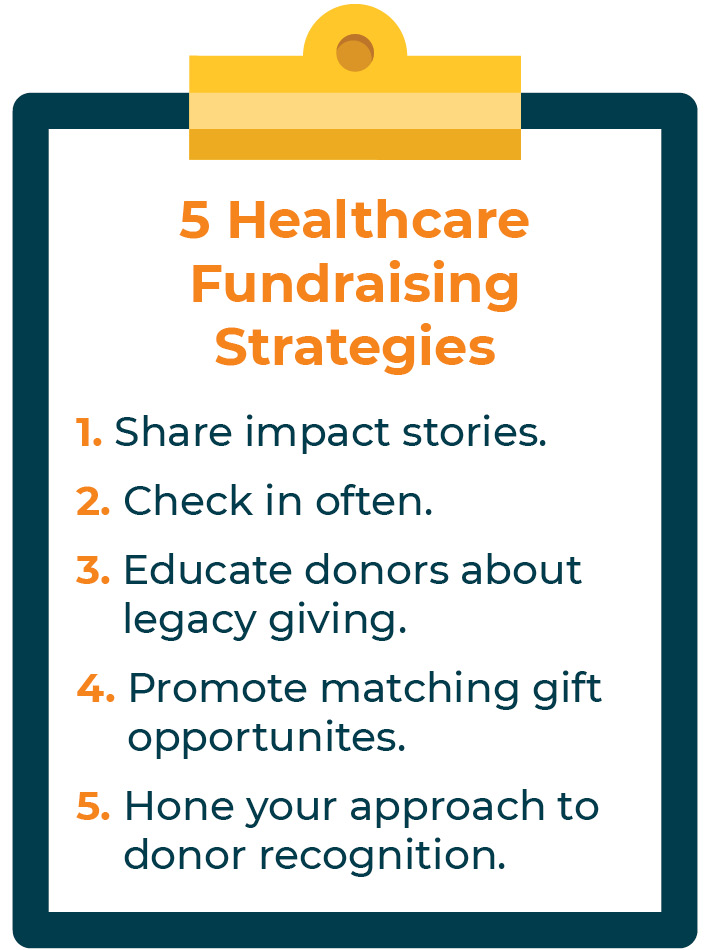Comprehending the Important Parts of Nonprofit Fundraising: Secret Practices for Enhancing Economic Sustainability
Nonprofit fundraising is a multifaceted endeavor that needs a nuanced understanding of a number of vital elements to make certain monetary sustainability. From calculated planning that straightens with mission-driven objectives to the growing of meaningful contributor partnerships, each component plays a vital function in the total success of fundraising efforts.
Strategic Fundraising Planning
Strategic fundraising planning is an important component for any kind of not-for-profit organization aiming to accomplish its objective efficiently. This procedure entails establishing clear, measurable goals that align with the organization's general purposes while taking into consideration the unique requirements of the community it serves. A well-structured fundraising strategy not just identifies potential revenue sources however likewise details the strategies and approaches essential to involve those sources.

In addition, leveraging information analytics can educate decision-making by supplying insights into benefactor behavior and fads, allowing nonprofits to tailor their fundraising methods as necessary. Normal evaluations and updates of the fundraising plan are important to react to altering scenarios and emerging opportunities. Ultimately, a thorough critical fundraising plan works as a roadmap for nonprofits, fostering economic stability and enabling them to fulfill their mission efficiently.
Structure Donor Relationships
Structure solid contributor connections is crucial for the long-term sustainability of any not-for-profit organization. These partnerships are the structure upon which effective fundraising initiatives are constructed, as they cultivate trust fund, commitment, and engagement amongst fans. Nonprofits must focus on growing significant links with their contributors, recognizing that each interaction can considerably affect their willingness to contribute.
To successfully construct contributor connections, organizations must focus on individualized engagement techniques. This includes recognizing the passions, inspirations, and providing patterns of individual benefactors, enabling customized communication that resonates with them. Regular updates on organizational development, program outcomes, and the impact of contributions reinforce the worth of their support.
In addition, sharing gratefulness is vital. Acknowledging contributions immediately and best regards not only improves relationships yet additionally urges continuous support. Occasions such as benefactor admiration gatherings offer chances for individual connections and neighborhood structure.
Eventually, supporting contributor connections goes beyond transactional interactions; it personifies a collaboration where benefactors feel valued and integral to the goal. By investing time and resources in relationship-building, nonprofits can improve contributor retention, increase go to the website lifetime offering, and guarantee monetary stability for their efforts.
Efficient Communication Techniques
Effective communication techniques play a crucial duty in enhancing the strong benefactor relationships that nonprofits aim to grow. Clear and regular messaging is crucial for communicating the goal, vision, and effect of the company. Verbalizing the one-of-a-kind worth recommendation aids donors recognize exactly how their payments make a substantial difference.
Using multiple communication channels-- such as e-mails, social media sites, e-newsletters, and in-person events-- makes certain that messages get to a varied target market - nonprofit agency. Tailoring interaction to different benefactor sectors can boost interaction; for circumstances, significant contributors may appreciate thorough reports on funding appropriations, while smaller sized donors may choose concise updates highlighting vital success
Narration is another effective tool in nonprofit communication. Sharing compelling narratives regarding recipients can evoke emotional reactions and promote a much deeper connection with the cause. Transparency regarding financials and program outcomes constructs trust, urging donors to remain engaged with time.
Involving the Area
Community interaction is vital for nonprofits seeking to magnify their impact and cultivate a feeling of ownership amongst neighborhood stakeholders. Developing a robust connection with the community not only improves visibility yet likewise constructs trust, crucial for lasting fundraising efforts. By proactively including neighborhood members in decision-making procedures, nonprofits can align their objectives with the needs and desires of the populace they serve.
To efficiently engage the community, nonprofits need to prioritize transparency and open interaction. Hosting public discussion forums, workshops, and informative sessions enables significant discussion, where stakeholders can voice their opinions and add to the organization's vision. Furthermore, working look these up together with neighborhood services, institutions, and civic companies can create synergistic collaborations that leverage shared sources for higher effect.
An additional critical aspect of area interaction is acknowledging and commemorating regional contributions. Acknowledging benefactors, advocates, and volunteers cultivates a sense of belonging and loyalty, urging continued participation. Additionally, showcasing success stories and the concrete benefits of area assistance can inspire others to add.
Eventually, proactive community involvement cultivates a network of advocates that are invested in the nonprofit's mission, making sure lasting support and enhanced financial sustainability.
Using Technology and Tools

One vital tool for nonprofits is a detailed contributor administration system. These systems allow companies to maintain in-depth records of donor preferences, contributions, and communications, helping with personalized interaction and involvement (nonprofit agency). Additionally, making use of on the internet fundraising platforms allows nonprofits to get to a wider target market, making it simpler for advocates to contribute through numerous networks, including social networks and e-mail projects
Additionally, the usage of job administration devices can help enhance interior procedures, guaranteeing that fundraising teams remain organized and concentrated on their objectives. Automation software can likewise streamline repetitive tasks, such as sending thank-you emails or pointers, releasing up personnel time for more critical campaigns.
Conclusion
In verdict, the vital elements of nonprofit fundraising incorporate calculated planning, solid benefactor connections, effective look at this website communication, neighborhood interaction, and the use of innovation. These aspects collectively contribute to improving economic sustainability and durability within nonprofit companies.
In addition, leveraging data analytics can educate decision-making by giving insights into contributor actions and patterns, permitting nonprofits to tailor their fundraising techniques accordingly.Building strong contributor connections is necessary for the long-term sustainability of any type of not-for-profit organization.Effective interaction methods play an essential role in reinforcing the solid benefactor relationships that nonprofits make every effort to grow.One important tool for nonprofits is a detailed benefactor management system.In conclusion, the crucial parts of not-for-profit fundraising include critical preparation, strong benefactor partnerships, effective communication, area involvement, and the use of innovation.
Comments on “Nonprofit Marketing: How to Develop a Powerful Brand Name and Boost Assistance”